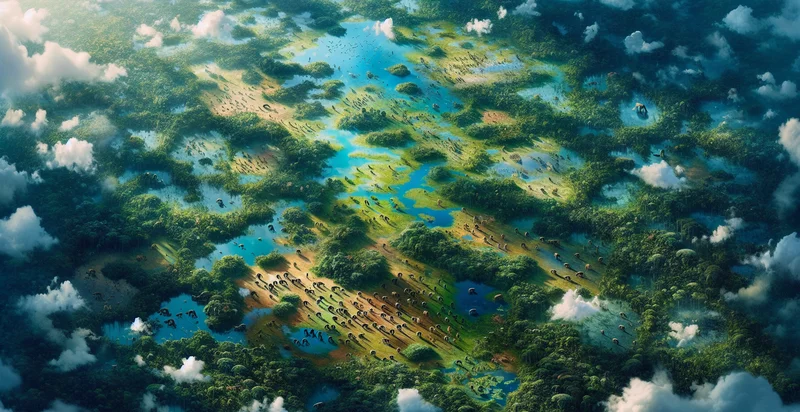Identify aerial views of wildlife sanctuaries
using AI
Below is a free classifier to identify aerial views of wildlife sanctuaries. Just upload your image, and our AI will predict if the image shows a wildlife sanctuary or not - in just seconds.

Contact us for API access
Or, use Nyckel to build highly-accurate custom classifiers in just minutes. No PhD required.
Get started
import nyckel
credentials = nyckel.Credentials("YOUR_CLIENT_ID", "YOUR_CLIENT_SECRET")
nyckel.invoke("aerial-views-of-wildlife-sanctuaries", "your_image_url", credentials)
fetch('https://www.nyckel.com/v1/functions/aerial-views-of-wildlife-sanctuaries/invoke', {
method: 'POST',
headers: {
'Authorization': 'Bearer ' + 'YOUR_BEARER_TOKEN',
'Content-Type': 'application/json',
},
body: JSON.stringify(
{"data": "your_image_url"}
)
})
.then(response => response.json())
.then(data => console.log(data));
curl -X POST \
-H "Content-Type: application/json" \
-H "Authorization: Bearer YOUR_BEARER_TOKEN" \
-d '{"data": "your_image_url"}' \
https://www.nyckel.com/v1/functions/aerial-views-of-wildlife-sanctuaries/invoke
How this classifier works
To start, upload your image. Our AI tool will then predict if the image shows a wildlife sanctuary or not.
This pretrained image model uses a Nyckel-created dataset and has 2 labels, including Busy Sanctuary and Empty Sanctuary.
We'll also show a confidence score (the higher the number, the more confident the AI model is around if the image shows a wildlife sanctuary or not).
Whether you're just curious or building aerial views of wildlife sanctuaries detection into your application, we hope our classifier proves helpful.
Related Classifiers
Need to identify aerial views of wildlife sanctuaries at scale?
Get API or Zapier access to this classifier for free. It's perfect for:
- Wildlife Population Monitoring: This function can be used to accurately identify and monitor the population of various wildlife species within protected areas. By analyzing aerial views, conservationists can track population growth or decline, aiding efforts in species preservation.
- Habitat Assessment: Researchers can utilize the classification images to assess the health of different habitats within wildlife sanctuaries. By identifying vegetation types and density, they can better understand the ecological balance and make informed management decisions.
- Anti-Poaching Efforts: Law enforcement agencies can leverage aerial imagery to identify illegal activities within wildlife sanctuaries. By detecting suspicious land use patterns or increased human activity, they can deploy resources more effectively to combat poaching.
- Ecotourism Development: Businesses in the ecotourism sector can use the aerial classifications to market wildlife sanctuaries. By showcasing the biodiversity and natural beauty through targeted visual identification, they can attract more visitors and educate them on conservation efforts.
- Environmental Impact Studies: NGOs and governmental bodies can implement this function in their environmental assessments. By classifying wildlife habitats, they can better understand the potential impact of development projects on local ecosystems and wildlife.
- Climate Change Research: Scientists studying the effects of climate change on wildlife can use aerial image classification to track habitat changes over time. This data can help in understanding how shifts in climate affect animal movements, breeding grounds, and food sources.
- Education and Awareness Programs: Educators can utilize classified aerial views in wildlife conservation programs. These images can serve as effective visual aids, enhancing public understanding of biodiversity and habitat protection initiatives among students and local communities.


